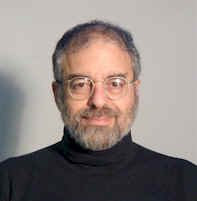The Green Machine:
Combining Information Design with Persuasion Design to Promote Eco-Action
 Aaron Marcus, Aaron Marcus and Associates
Aaron Marcus, Aaron Marcus and Associates
aaron.marcusSeminar on People, Computers,
and Design
Stanford University April 2, 2010, 12:50pm, Gates B01
Aaron Marcus and Associates, Inc., designed and tested a prototype mobile phone application and its user interface that persuades people to save home energy usage. The project combines information design and persuasion design (based in part on the work of B. J.Fogg, Stanford University). The original version was presented first in Paris at the international information design conference "Designing Date for Decisions" and two articles have subsequently been published about the project. Mr. Marcus will summarize the project process, results, and next steps.
![]()
Aaron Marcus is the founder and President of Aaron Marcus and Associates, Inc. (AM+A). A graduate in physics from Princeton University, and in graphic design from Yale University, in 1967, he became the world's first graphic designer to be involved fulltime in computer graphics. In the 1970’s, Aaron programmed a prototype desktop publishing page layout application for the Picturephone (tm) at AT&T Bell Labs; programmed virtual reality spaces, while a faculty member at Princeton University; and directed an international team of visual communicators, as a Research Fellow at the East-West Center, in Honolulu. In the early 1980’s, he was a Staff Scientist at Lawrence Berkeley Laboratory in Berkeley, founded AM+A, and began research as a Co-Principal Investigator of a project funded by the US Department of Defense's Advanced Research Projects Agency (DARPA). In 1992, Marcus received the National Computer Graphics Association's annual award for contributions to industry. He was the keynote speaker for ACM/SIGGRAPH-80, and the organizer and chair of the opening plenary panel for ACM/SIGCHI-99. Marcus has written over 100 articles and written/co-written five books. For the last eight years, Aaron has turned his attention to the Web and wireless, mobile devices; helping the industry to learn about good user-interface and information-visualization design, providing guidelines for globalization/localization, and focusing on challenges of "baby faces" (small displays for consumer information appliances) of ubiquitous devices, and cross-cultural communication.
![]()
The talks are open to the public. They are in the Gates Building, Room B01 in the basement. The nearest public parking is in the structure at Campus Drive and Roth Way.
View this talk on line at CS547 on Stanford OnLine.
Titles and abstracts for previous years are available by year and by speaker.